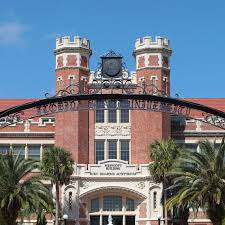Speaker
Description
The system of light pseudoscalar meson π0, η and η' provide a unique laboratory to probe fundamental QCD symmetries at the confinement scale. While π0 and η are Goldstone bosons due to spontaneous chiral symmetry breaking, η' is not due to an axial U(1) anomaly. There is a second type of chiral anomaly driving the two-photon decays of these mesons. This system harbors information about the effects of SU(3) symmetry and the mixing phenomena of the mesons due to isospin symmetry breaking. A study of this system will have important impact on the low-energy QCD: testing the chiral anomaly and probing the origin and dynamics of chiral symmetry breaking; offering a clean path for model independent determinations of the light quark-mass ratio and the η-ηꞌ mixing angle; and providing inputs to calculate the hadronic light-by-light scattering corrections to the anomalous magnetic moment of the muon. A comprehensive experimental program has been developed at Jefferson Laboratory (JLab) to perform high precision measurements of the two-photon decay widths and the transition form factors of π0, η and η' via the Primakoff effect. A measurement of the π0 radiative decay width was carried out at JLab 6 GeV and the published result achieved a precision of 1.5%. A measurement of the η radiative decay width is currently on-going with a 11 GeV tagged photon beam. The status of this program and its physics impact will be discussed.
| speaker affiliation | University of North Carolina Wilmington |
|---|

